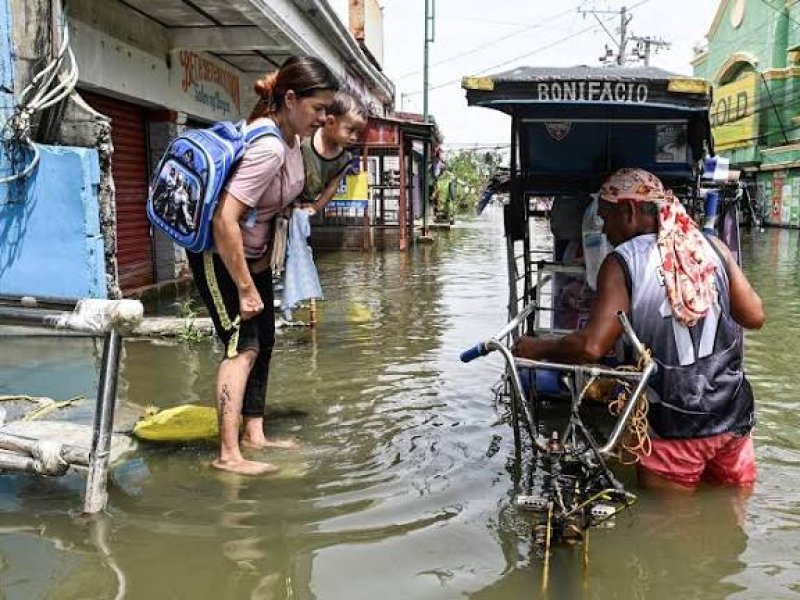

By the time the storm had blown out of Luzon and into the South China Sea late Sunday, at least seven people were confirmed dead, thousands had been forced from their homes, and communities were left grappling with the aftermath of yet another natural disaster.
According to the Philippine government’s disaster-mitigation agency, more than 22,000 people were evacuated from flood- and landslide-prone villages as Fengshen approached, with nearly 14,000 evacuees still unable to return home by Monday, October 20.
The storm, the 18th tropical cyclone to batter the archipelago in 2025, struck at a time when central and southern provinces were still reeling from recent earthquakes that had left more than 80 people dead and damaged over 134,000 houses in central Cebu province alone, as reported by the Associated Press and Vietnam News Agency.
Capiz province, the situation quickly turned dire. Continuous rains from Fengshen submerged large swathes of Pontevedra and Roxas City, prompting the Capiz Provincial Disaster Risk Reduction and Management Office (PDRRMO) to declare a state of calamity.
The flooding was so severe that Roxas City, which had recorded only 305 millimeters of rain in the first half of October, was deluged by nearly 400 millimeters in a single day—more than the city’s typical monthly total for October, according to the Philippine Daily Inquirer.
Tragedy struck in multiple locations. In Roxas City, one person drowned on Saturday, October 18, after being swept away by floodwaters made more treacherous by a high tide. Four more fatalities in Capiz were later confirmed, including a 44-year-old man from Roxas City and a 45-year-old man from Pilar town who was electrocuted. Two additional deaths in Roxas City were still being verified by authorities as of late Sunday. The total death toll attributed to Fengshen in Capiz alone rose to five by October 20, bringing the nationwide storm-related fatalities to ten, as reported by local officials.